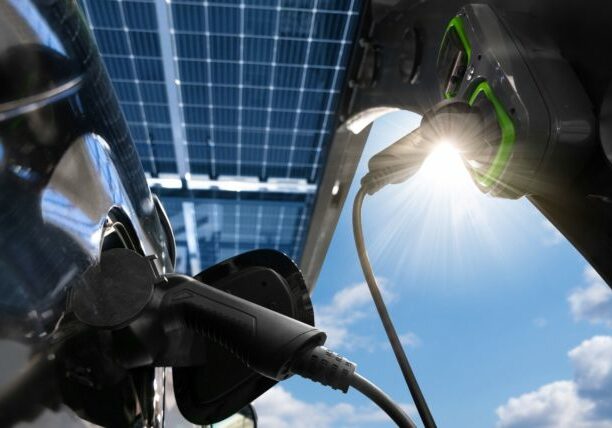April 25, 2018
Battery Storage: After 100 Years, The Market Finally Arrives
By Lewis Milford
The inventor of the battery had few realistic hopes for its success.
In 1893, Thomas Alva Edison, with the light bulb created, had nothing but contempt for his battery competitors’ claims to store electricity, and nothing but praise for his own invention. He told this to a reporter:
The storage battery is, in my opinion, a catch-penny, a sensation, a mechanism for swindling by stocking companies. The storage battery is one of those peculiar things which appeal to the imagination, and no more perfect thing could be desired by stock swindlers than that very self-same thing. In 1879, I took up that question, and devised a system of placing storage batteries in houses connected to mains and charging them in the day time, to be discharged in the evening and night to run incandescent lamps.
But despite his confident public stance, privately he was aware of his own battery’s limitations. Frustrated by years of design problems, with over 140 battery patents, he wrote to his wife that “he hoped there would be no batteries in heaven.”
As it turned out, his nickel-iron battery didn’t fare much better than his competition.
While it was an early success in the first generation of electric cars, it was driven into the trash heap of technological history by the more reliable, mass produced, gas-powered Model T.
But time often proves some geniuses to have been right all along.
It has taken over a century for the technology to overcome many of its nascent shortcomings. Today, battery storage seems finally on a solid path to match Edison’s early boasts.
The world’s leading technology consultant, McKinsey, now says battery storage is the “next disruptive technology in the power sector.” According to a 2017 report, “low-cost storage could transform the power landscape.” The implications are profound:
At today’s lower prices, storage is starting to play a broader role in energy markets, moving from niche uses such as grid balancing to broader ones such as replacing conventional power generators for reliability, providing power-quality services, and supporting renewables integration.
The impressive results for storage are in for 2017. Battery installations were up 27 percent to 431 megawatt hours in 2017. And that growth is expected to double in 2018.
The long-term future potential for market growth is also huge, according to a 2018 study from the Brattle Group:
The study finds that storage market potential could grow to 50,000 MW over the next decade if storage costs continue to decline and state regulatory policies…remove barriers that prevent storage resources from realizing multiple value streams.
This long arc of technological history is important context for how advocates, foundations, and policymakers have approached clean energy strategies in more recent times—with targeted programs and persistent patience—and why such an approach for battery storage is needed now.
Since the 1980s, energy and environmental advocates have promoted technology-specific clean energy policies and public investments. Thirty years ago, these early movements were focused on energy efficiency. The strategies expanded to utility-scale wind in the 1990s and then to distributed solar at the turn of the century.
Targeted utility incentives for energy efficiency jump-started the clean energy market, and they are the mainstay today, three decades after their inception. State and federal policies have created tax credits for wind and solar, state-level utility investment charges, renewable portfolio standards, and net metering for solar photovoltaics (PV) systems, which have led to extraordinary cost reductions and scale up of clean energy markets.
More recently, advocates have called for environmental justice and equity strategies to ensure that these clean energy programs are fairly designed and justly administered to benefit low-income communities.
Now, after a hundred years of technology improvement, an old enabling technology — battery storage — has emerged anew. Whether the title is deserved yet, it is repeatedly called the “holy grail” of clean energy as it could solve the variable production problem faced by many renewable energy technologies, the same power shifting challenge Edison tried to solve.

- It can be scaled to work with different electric generation systems, from building level to baseload power.
- It can be combined with distributed generation technologies such as solar or wind (onshore or offshore) to reduce fossil fuel emissions.
- It can produce versatile benefits, including economic, health, safety, and energy resiliency.
- It can reduce utility demand charges and electric bills for commercial customers and vulnerable low-income residents.
- It can be used by utilities to reduce regional capacity payments.
- It can generate revenue from grid applications like frequency regulation.
- It can provide resilient power for community microgrids like those envisioned for Puerto Rico.
- It can work in transportation, by enabling electric vehicle (EV) public charging stations to reduce their utility charges, or perhaps, according to some of its wildest boosters, to power electric airplanes.
These varied uses, which will only expand over time, are what makes battery storage technology so important to clean energy and climate change. While we are at the earliest stages of this technology’s development, storage could be a critical transformational enabling energy technology for this century.
Whether it lives up to this potential will depend on technology developments and policies.
We have seen an historic reduction in the cost of battery storage in the last few years. No longer a distant dream of Edison, cost declines have made battery storage an everyday part of our lives—from laptops to electric vehicles to stationary, building-sized batteries.

And, right on time, according to Bloomberg New Energy Finance’s most recent 2017 numbers, the costs of battery storage have “fallen by a remarkable 24 percent since 2016”—far exceeding their earlier projections. In a late March 2018 cost update, BNEF wrote, “the conclusions are chilling for the fossil fuel sector.”
Battery technology is not made by hand as in Edison’s day, and its costs are not tied to volatile fossil fuel prices. Rather, this is the first time in history that energy technologies like solar—and now battery storage—can benefit from the same cost-reducing, manufacturing economies of scale that produce ever cheaper and ubiquitous information-age technologies like personal computers, cell phones, and disk drives.
Due to cost reductions, there are three obvious storage applications where the economics work now.
First, they make financial sense for commercial-customer applications located behind the meter, where batteries can reduce demand changes and provide resiliency, while adding value to solar installations at the same time.
Second, battery storage also could replace economically a significant number of the hundreds of gas peaker plants—especially those polluting, less frequently run plants located in heavily congested grid areas with high utility costs—in the next few years.
And third, there are numerous utility-scale storage projects coming on line in many states that will enable more renewable energy resources onto the grid and reduce transmission and capacity costs.
These three, reasonably certain, economically-driven markets could propel storage into the mainstream and produce significant environmental and economic benefits.
Additionally, in future energy markets, there might be ways for renewables and storage to replace or reduce reliance on baseload fossil-fueled plants, a topic of intense debate.
To crack these markets, there are still numerous barriers inhibiting greater storage adoption, as was the case for the solar industry about 20 years ago. For storage, these barriers include information gaps about technology options, costs, safety, benefits, and other market barriers; an absence of coordinated state and federal policies and programs to achieve cost reductions and encourage market uptake; and a lack of constancy across available incentives, financing options, and business models.
We have seen some limited combination of federal tax credits, state mandates, incentives, and other programs begin to shape the direction of early storage market development. But to overcome these obstacles and scale up the technology in time to address climate and other pressing energy needs, more supportive policies and strategies are needed.
Future storage policies are likely to resemble more the socket wrench than the hammer, geared to fit the multiple and still emerging applications that this technology offers. Like technology innovation itself, this policy process should be driven by progress and adapted to new data and opportunities—ratcheted to fit new markets taking shape. Different types of analyses and policies will be needed for each application.
The environmental community and its philanthropic supporters should lead this effort. They can help shape this 100-year-old technology curve to serve public purposes today—reduced carbon emissions, broad clean energy equity, and expanded economic benefits—and not just to serve short-term, private interests, but to benefit all.
We need to jump-start new strategies for clean energy, climate, and environmental justice advocacy that fully incorporate the benefits from battery storage.
The environmental community and its philanthropic supporters should lead this effort. They can help shape this 100-year-old technology curve to serve public purposes today—reduced carbon emissions, broad clean energy equity, and expanded economic benefits—and not just to serve short-term, private interests, but to benefit all.
Clean Energy Group wrote a comprehensive new report on how this can be done – read it here.














